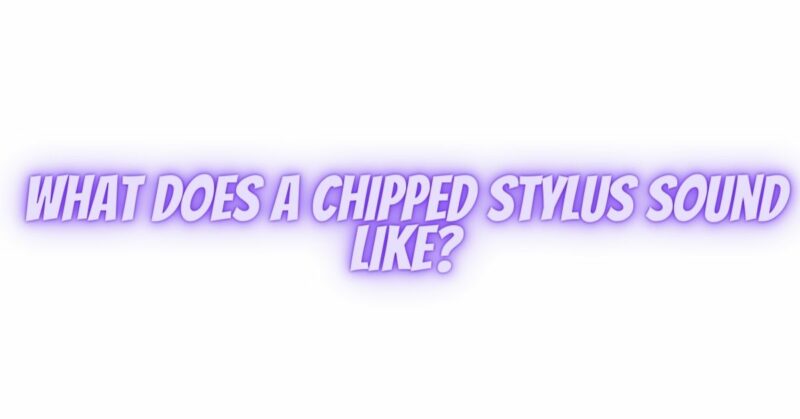A stylus, also known as a needle, is a critical component of a turntable responsible for tracking the grooves on vinyl records and translating them into sound. When a stylus becomes chipped or damaged, it can significantly impact the quality of audio playback. In this comprehensive guide, we’ll explore what a chipped stylus sounds like, the potential causes of stylus damage, and the importance of addressing this issue promptly.
Understanding the Role of a Stylus
Before we discuss the audio symptoms of a chipped stylus, let’s review the essential role a stylus plays in the vinyl playback process:
- Tracking Grooves: The stylus follows the physical grooves on a vinyl record, which contain the audio information. It translates the minute variations in the groove walls into electrical signals.
- Signal Generation: As the stylus moves along the grooves, it generates electrical signals that are then amplified and sent to speakers to produce sound.
- Contact and Damage: The stylus is in constant contact with the record’s surface, making it susceptible to wear and potential damage. The condition of the stylus directly affects sound quality and the lifespan of your records.
Audio Symptoms of a Chipped Stylus
A chipped stylus can manifest in various ways, resulting in specific audio symptoms. Here are common signs to listen for to identify a chipped stylus:
- Audible Distortion:
- One of the most noticeable signs of a chipped stylus is audible distortion in the music. This distortion can manifest as crackling, popping, or an overall decrease in sound quality. It occurs because the chipped tip struggles to accurately track the grooves.
- Pops and Clicks:
- A chipped stylus often produces pops and clicks during playback, which are typically caused by the stylus skipping or jumping within the grooves. These noises are especially noticeable during quiet or silent passages of the music.
- Tracking Issues:
- If the stylus has a chip, it may have difficulty consistently tracking the grooves. This can lead to noticeable tracking issues, including jumps or skips across the record surface.
- Imbalanced Sound:
- A chipped stylus may not properly track both stereo channels, resulting in imbalanced sound. You might notice that certain instruments or vocals are louder in one channel than the other.
- Loss of High Frequencies:
- Over time, a chipped stylus can lose its ability to accurately reproduce high-frequency details. This leads to a loss of treble or high-end frequencies in the audio, making the music sound dull.
- Sibilance and Distorted Vocals:
- A damaged stylus can exaggerate sibilance (excessive “s” and “sh” sounds) and cause distortion in vocal recordings, making vocals sound harsh and unnatural.
- Tonal Changes:
- The overall tonal character of the music may change with a chipped stylus. It may become less faithful to the original recording, with alterations in the balance of frequencies.
- Reduced Fidelity:
- In general, a chipped stylus leads to a loss of audio fidelity. The music may sound less detailed, dynamic, and engaging, detracting from the listening experience.
Causes of Stylus Chipping
Stylus damage can occur for various reasons, including:
- Accidental Contact: Mishandling the turntable or inadvertently making contact with the stylus while it’s in motion can lead to chipping.
- Record Debris: Records that are not properly cleaned and maintained can contain debris like dust or dirt particles. When the stylus encounters these contaminants, it can become chipped.
- Record Condition: Playing records that are scratched, warped, or damaged increases the risk of stylus damage.
- Turntable Alignment: An improperly aligned turntable or tonearm can cause the stylus to make uneven contact with the grooves, leading to chipping over time.
Importance of Prompt Replacement
A chipped stylus not only compromises audio quality but also poses a risk to your vinyl records. The damaged tip can cause additional wear and damage to the grooves, reducing the lifespan of your cherished records. To prevent further damage to your records and maintain the quality of your audio playback, it’s essential to replace a chipped stylus promptly.
Conclusion
A chipped stylus can have a significant negative impact on the sound quality of your vinyl playback, introducing distortion, tracking issues, and other audio symptoms. It’s crucial to listen for these signs and address a chipped stylus promptly to protect your records and enjoy the full fidelity of your vinyl collection. Regular stylus maintenance, careful handling, and proper cleaning practices can help prevent stylus damage and ensure a superior listening experience.


